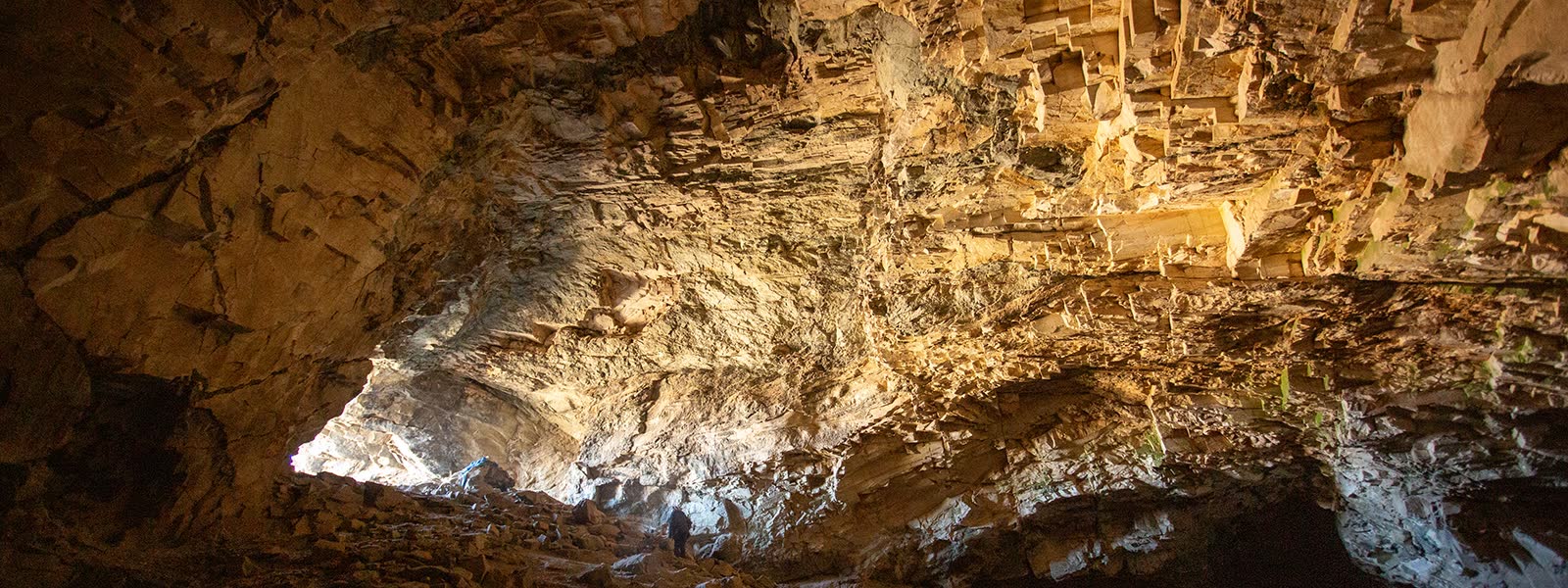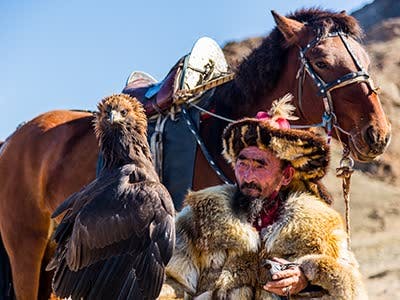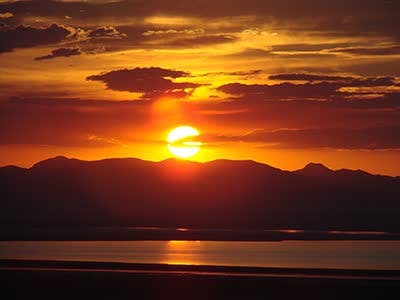Gurvan Tsenkher cave
🏞️ Tsenkheriin Agui (Gurvan Tsenkher Cave), Mongolia
Tsenkheriin Agui, also known as Gurvan Tsenkher Cave, is a significant archaeological and natural site located in the Altai Mountains of western Mongolia. Situated approximately 25 kilometers west of Mankhan village in Khovd Province, the cave sits at an altitude of 2,100–2,400 meters above sea level.
The cave is renowned for its Paleolithic-era petroglyphs, estimated to be around 40,000 years old. These ancient artworks depict a variety of animals, including mammoths, ostriches, camels, and deer, offering a glimpse into Mongolia’s prehistoric fauna and the early human inhabitants’ artistic expression.
📌 Quick Facts
| 🗺️ Location | Khovd Province, Mongolia |
|---|---|
| 🏔️ Altitude | 2,100–2,400 meters above sea level |
| 🕰️ Age of Petroglyphs | Approximately 40,000 years old |
| 🎨 Artistic Depictions | Mammoths, ostriches, camels, deer, and more |
| 🏞️ Cave Dimensions | Interior height of 15 m; dome-shaped ceiling |
| 🧭 Accessibility | 25 km west of Mankhan village; accessible by 4x4 |

🌟 Highlights
Ancient Petroglyphs: The cave walls feature vivid red and ochre paintings of extinct and extant animals, providing insight into the region’s prehistoric biodiversity.
Geological Features: Composed of carbonate rock and white-gray calcareous marble, the cave boasts impressive natural formations, including a hollow spherical roof.
Historical Significance: Evidence of soot on the walls suggests prolonged human habitation, indicating the cave’s importance as a shelter and cultural site during the Paleolithic era.
🗺️ Nearby Attractions
Mankhan Nature Reserve: A protected area home to diverse flora and fauna, including the endangered Mongolian saiga antelope.
Khar Us Nuur National Park: Located approximately 20 km from the cave, this park features vast wetlands and is a haven for birdwatchers.
Petroglyph Sites: Additional ancient rock carvings can be found in the vicinity, offering further exploration opportunities for history enthusiasts.
✨ Special Features
“Cave of the Three Blues”: The name “Gurvan Tsenkher” refers to the three nearby rivers—Tsenkher, Middle Tsenkher, and Northern Tsenkher—that enhance the area’s natural allure.
UNESCO Tentative List: The cave’s petroglyphs have been recognized for their cultural value and are on Mongolia’s tentative list for UNESCO World Heritage status.

❓ FAQ
Q: How can I reach Tsenkheriin Agui?
🅐 The cave is accessible by a 4x4 vehicle from Mankhan village, located 25 km to the east.
Q: Are guided tours available?
🅐 Yes, local guides offer tours that provide insights into the cave’s history and significance.
Q: Is there accommodation nearby?
🅐 Ger camps and small guesthouses are available in the vicinity, offering traditional Mongolian hospitality.
Q: What should I bring when visiting?
🅐 It’s recommended to wear sturdy footwear, bring a flashlight, and consider wearing a mask due to dust and bird droppings inside the cave.
🧳 Visitor Tips
Best Time to Visit: Late spring to early autumn (May to September) offers the most favorable weather conditions.
Respect the Site: Avoid touching the petroglyphs to preserve them for future generations.
Stay Informed: Check local travel advisories and weather conditions before planning your visit.
🧭 Why Visit?
Cultural Heritage: Witness some of the oldest known rock art in Central Asia, offering a unique connection to early human history.
Natural Beauty: Experience the serene landscapes of the Altai Mountains, with opportunities for hiking and wildlife observation.
Educational Value: Ideal for enthusiasts of archaeology, anthropology, and geology, providing tangible links to ancient civilizations.
Tsenkheriin Agui stands as a testament to Mongolia’s rich prehistoric past, offering visitors a unique blend of natural beauty and ancient artistry. Whether you’re a history buff, nature lover, or adventurous traveler, this cave promises an unforgettable experience.
RELATED DESTINATIONS
Witness the ancient art of Kazakh eagle hunting in Western Mongolia—where golden eagles and humans share a bond built on tradition and trust.
Discover Uvs Lake, Mongolia’s largest saline lake, a UNESCO World Heritage Site teeming with rare wildlife and dramatic landscapes.
Experience the unique vocal art of Mongolian Khoomei Throat singing harmonic overtones echoing across vast steppes and sacred mountains.


